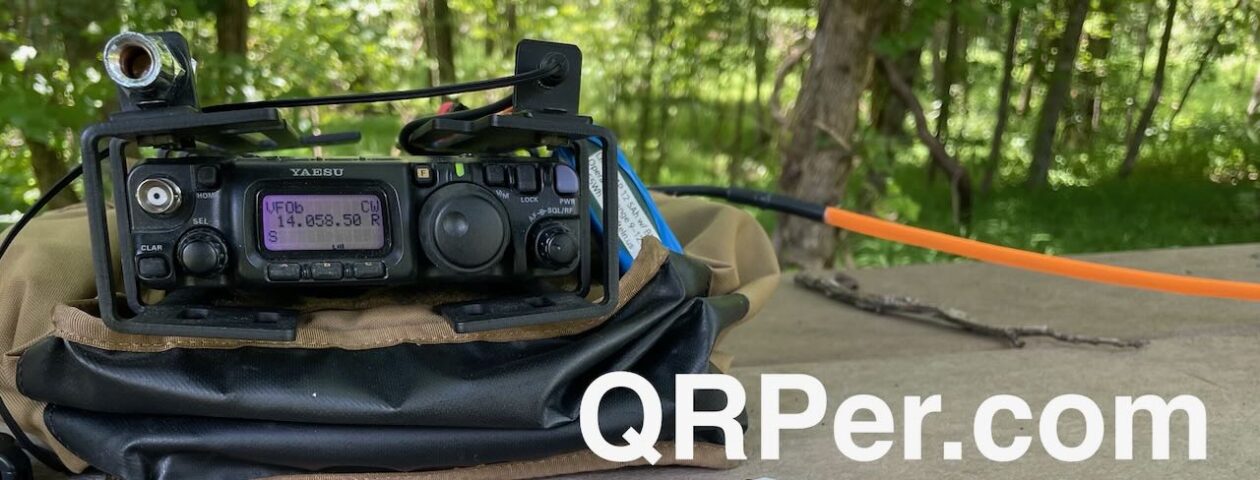 Many thanks to Skip (K4EAK) who shares the following guest post:
Many thanks to Skip (K4EAK) who shares the following guest post:
The QRPguys DS-1 Portable Antenna Kit
by Skip (K4EAK)
There have been several videos and extended comments lately about the Elecraft AX1 and AX2 antennas, both of which function remarkably well for a small, highly compromised antenna.
For those interested in other, similar designs, especially those hams who find that building the equipment is half the fun, another option to consider is the QRPguys DS-1 antenna.
 The DS-1 is similar in concept and design to the AX2. It consists of a base-loading coil, a 46.5-inch collapsible whip, and a plate to attach the antenna to a small tripod. One can also purchase an add-on 40-meter coil. The can be deployed in just a couple minutes and, when collapsed, the longest portion is only 6.5” long, easily fitting in the palm of one’s hand. QRPguys recommends a 16.5′ counterpoise; I use two such wires, usually spread out at a 180-degree angle. I’ve also used it with a clamp-on mount and a car window mount.
The DS-1 is similar in concept and design to the AX2. It consists of a base-loading coil, a 46.5-inch collapsible whip, and a plate to attach the antenna to a small tripod. One can also purchase an add-on 40-meter coil. The can be deployed in just a couple minutes and, when collapsed, the longest portion is only 6.5” long, easily fitting in the palm of one’s hand. QRPguys recommends a 16.5′ counterpoise; I use two such wires, usually spread out at a 180-degree angle. I’ve also used it with a clamp-on mount and a car window mount.
Building the antenna is simple and took me less than an hour. After installing a BNC connector into a brass plug and inserting the plug onto a length of PEX tubing, one simply runs the supplied 22AWG wire from inside the tubing, out and around making 22 turns, and then sealing it with a length of heat shrink tubing.
There are really only two aspects of assembly that are slightly more difficult. The first is that it’s necessary to drill and tap two holes for 4-40 screws, which obviously means that (1) one needs a 4-40 tap and (2) one needs to be careful tapping the threads to assure a clean cut. The second is that the heat shrink tubing, at least as supplied in my kit, was grossly oversized, which required some finesse in getting a final product that was at least reasonably aesthetic, to say nothing of accomplishing that without dry roasting my fingertips.
Field testing of the DS-1 shows that it works surprisingly well. The SWR is well below 2.0 across almost all of the 20-meter band and where it is higher than that (the upper end of the voice portion), the KX2 internal tuner can tune it easily. As one would expect, on 40 meters the antenna has a somewhat narrower range, although the KX2 tuner has handled it on all of the frequencies I’ve tested so far (all CW). And it appears to be efficient enough.
I have used it on numerous activations and consistently get to the requisite 10 contacts within 20 minutes or so after getting spotted. After that, the number of contacts depends on the time available, but for those occasions when I have only a 30-minute window for an activation, the antenna is a convenient and practical alternative.

I keep the antenna, the tabletop tripod, and the counterpoise wires in the water bottle pocket of my pack, ready for use whenever I have a few moments for a quick activation.
73 Skip K4EAK











































